#forme d'arte
Explore tagged Tumblr posts
Text

Slowly places down their height differences for yall~
#- ofc their heights look different when like harley is in their wheelchair#- bettigan is taller probably. idk their true form is massive they're tryna compensate#traditional art#character design#thsc oc#@pike cassino#@harley d'arte#@bettigan boone#@argine
30 notes
·
View notes
Text

one of the "tame" monster form sketches I've done for Anselm! still needs a few tweaks? ultimately it's supposed to look like him with only a few changes
not entirely happy with it yet, I'm getting there
#the not so tame form is my favorite rn#myart#sketch#oc#ocs#anselm#laverne#Objet D'art#artists on tumblr
4 notes
·
View notes
Text
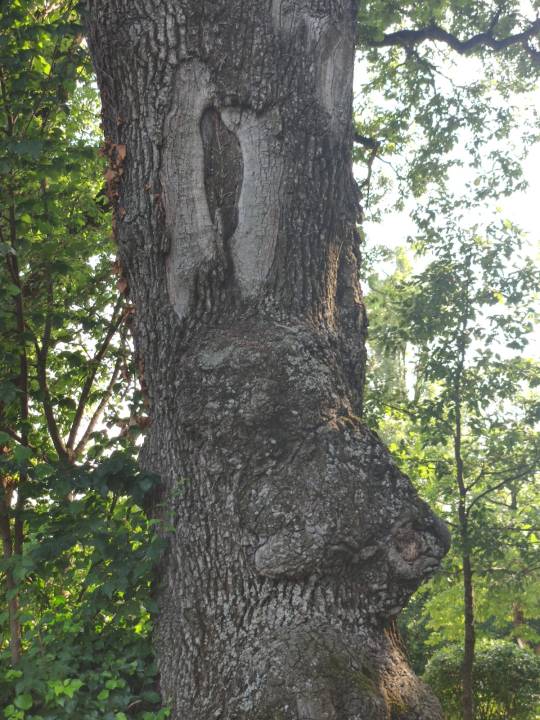
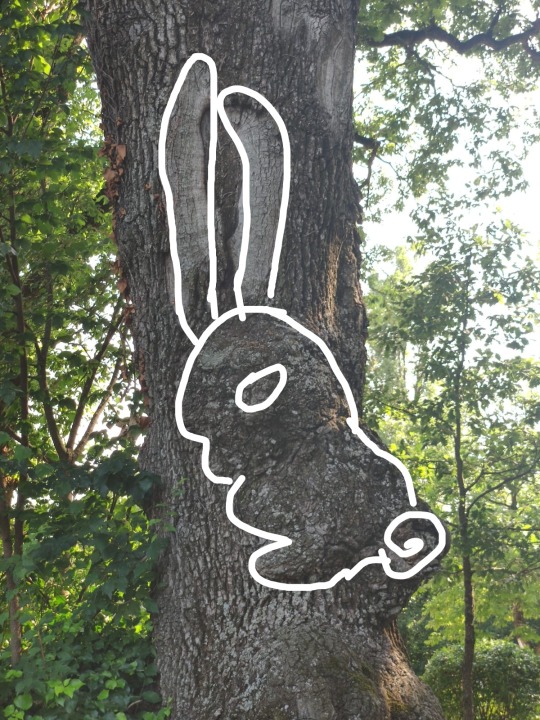
Solo io ci vedo un coniglio?
#pensieri per la testa#persa tra i miei pensieri#fotografia#foto#scatto fotografico#albero#tronco#corteccia#natura#opera d'arte#la natura è arte#coniglio#forme#immaginazione
8 notes
·
View notes
Photo




(via Coussin « "Métamorphose Énigmatique : Les Yeux Épars" » par Art-Vortex-fr)
#findyourthing#redbubble#Abstrait Papillon Yeux Épineux Forme Mystérieux Enigmatique Œuvre d'art Évolution Couleurs vives Harmonie Exploration Onirique Unique Compos
0 notes
Note
You said you love a good fashion doc- do you have any more to recommend?
Designers and tastemakers
Very Ralph (2019). The preeminent American designer of our time, one of the very few who can stand toe to toe with the titans of Paris and Milan. To call Ralph Lauren's work "sportswear" is to call the Sistine Chapel "kind of a big painting".
Halston (2019). Speaking of going head to head with Paris, Halston did it first. Skip Ultrasuede-- this is a much better doc about the king of American 70s disco glam.
McQueen (2018). When people talk about fashion as an art form, chances are they're thinking of Alexander McQueen. Worth watching for the pulse-pounding runway shows alone.
Westwood: Punk, Icon, Activist (2018). Obviously you already know about this one, but it's gotta go on any comprehensive list. Without Vivienne Westwood, punk would have been nothing but a handful of noisy assholes.
Diana Vreeland: The Eye Has to Travel (2011). My icon, my north star, my personal hero. The empress of taste and high priestess of personal style. Watch this doc whenever you need encouragement to do and wear whatever the hell you want.
The Gospel According to André (2017). Diana Vreeland's protegé and a godfather of style in his own right. If it happened in fashion in the last fifty years, André Leon Talley was there for it.
Lagerfeld Confidential (2007). I have a high tolerance for difficult and unpleasant people as long as I like their work. Your mileage may vary, but Karl Lagerfeld's immaculate, relentless taste cannot be denied.
Institutions and events
The First Monday in May (2016). Witness all the hustle, bustle, savvy, and stress that goes into planning the Met gala!
The September Issue (2009). Same as the above, but for the famous September issue of Vogue. Watch this to learn who Grace Coddington is.
Dior and I (2014). How do haute couture collections get made? In 8 weeks from start to finish, I guess, if you're Raf Simons during his first season at the House of Dior. A documentary and a thriller.
Scatter My Ashes at Bergdorf's (2013). No matter what other retailers might want you to think, Bergdorf Goodman is the last great department store. A portrait, already halfway to a time capsule, of what luxury shopping used to be.
Peripheral, but may be of interest
Nose (2021). The passionate, delicate art of perfume creation for the House of Dior. The French landscapes where they source their materials will make you swoon.
Larger Than Life: The Kevyn Aucoin Story (2017). As the makeup artist to pretty much every single icon of the 80s and 90s, Kevyn Aucoin invented the image of that era as much as any designer.
Fabergé: A Life of Its Own (2014). Come for the dazzling jewels and sumptuous objets d'art; stay to find out how this illustrious name ended up on hair care products in the 70s.
Crazy About Tiffany's (2016). Another luxury jeweler whose name alone is the stuff dreams are made on.
Bill Cunningham New York (2010). The original street style photographer, since before "street style" was even a thing. A love letter to curiosity, and a testament to the power of taking an interest in the world around us.
Still on my watchlist
Salvatore: Shoemaker of Dreams (2020). Directed by Luca Guadagnino, which is enough to put this Ferragamo doc at the top of my list.
Advanced Style (2014). Portraits of seven women aged 62-95 with truly fab personal style. Top Letterboxd review is seething about how out of touch they are with the real world, which means I am probably gonna love it.
Suited (2016). A study of gender through clothing in modern culture.
Dries (2017). A year-- and four collections-- in the life of Dries Van Noten, who, interestingly, doesn't see the point of clothes that people can't buy to wear, and so does not do couture.
Yellow is Forbidden (2018). This doc about Guo Pei appears to use her career as a framework to understand the gatekeeping of global culture by the West. Dope as hell, if it can pull it off.
American Style (2019). The political, social, and economic history of America through its fashion. Another one that could be really awesome if done with insight and panache.
Quant (2021). She may share the credit for inventing the miniskirt with two other people, but it cannot be argued that Mary Quant invented 1960s Swinging London. And for that we say thank you Dame Mary.
#fashion#documentaries#film#this made me realize how broad of a category i consider fashion to be#joan didion? art forgery? the history of scotch? this too is style#nearly tossed a studio 54 doc on this list before remembering that it wasn't all that good#forthegothicheroine#questions queries quandaries
441 notes
·
View notes
Text

L'Art et la mode, no. 37, vol. 28, 14 septembre 1907, Paris. Robe en tulle brodé. Petit vêtement formant boléro court à longs pans en tussor à dessin de Jouy. Revers de taffetas. Guimpe et manches de tulle plissé. (Embroidered tulle dress. Small garment forming a short bolero with long panels in Jouy-pattern tussor. Taffeta lapels. Pleated tulle guimpe and sleeves.) Imp. d'art L. Lafontaine, Paris. Bibliothèque nationale de France
#L'Art et la mode#20th century#1900s#1907#on this day#September 14#periodical#fashion#fashion plate#color#description#bibliothèque nationale de france#dress#cape#collar#veil#hat#Modèles de chez#Maison Lucy
196 notes
·
View notes
Text










Milestone Monday
On this date, September 16 in 1886, Alsatian sculptor and painter Jean Arp (aka Hans Arp) was born in Strasbourg. Known for his abstract organic forms, Arp was closely associated the the Dada movement of the 1920s and 1930s. His greatest successes, however, came in the 1940s and 1950s before his death in 1966.
In memory of Jean Arp, we present some plates from the publication Jean Arp by Romanian art critic Ionel Jianou, published in Paris by ARTED, Editions d'Art in 1973.
View more Milestone Monday posts.
#Milestone Monday#milestones#Jean Art#abstract art#20th century art#Dada#sculptures#Ionel Jianou#ARTED#Editions d'Art#art books
112 notes
·
View notes
Text

Gherasim LUCA (Bucharest, 1913 - Paris, 1994)
Madeleine, undated, autograph manuscript, images cut from magazines with autograph poem, ms 860
Of Romanian origin, Gherasim Luca established close ties with French artistic circles in the early 1930s, most notably with the Surrealist group, before settling permanently in France in 1953.
Described by Gilles Deleuze as "the greatest poet of the French language", Luca developed a work of "limit-hero", to use the title of one of his works (1953), where the deconstruction of language is based on the refusal of political, identity or ethical categories and the recourse, twenty-five years before Deleuze and Félix Guattari, to the notion of anti-Œdipe. His atypical path, where the creative process is inseparable from his personal life, naturally led him to transpose his poetic experiments into the visual arts. In particular, from 1945 onwards, Luca began a series of collages - in which this autograph manuscript is included - made from photographs of various illustrations or, more importantly, reproductions of paintings, cut into squares of equal dimensions. Luca then glued these squares side by side to form a new, original and surprising image, following a process deeply inspired by the Surrealists. He gave these works the name "cubomania", a way of recalling the founding role of the square shape but also probably a way of mocking the heirs of cubism. Beyond the influence of the Surrealists and Marcel Duchamp's scandalous L.H.O.Q. (Musée National d'Art Moderne, Paris, 1919), Luca's "cubomanias" feature a personal dialogue with the most famous works of art of the past, from Leonardo da Vinci to the van Eyck brothers, Caravaggio and Ingres. This manuscript joins one of them acquired in 2019, Madonna of the Bourmestre Meyer (after Holbein).
83 notes
·
View notes
Text

This extraordinary objet d'art is one of the world's finest automata. The beautifully crafted egg conceals a delightful diamond-encrusted songbird. With the simple push of a button, the bird appears to sing its song. As luxurious as it is delightful, the 18k gold form is adorned by diamonds and enamel ~ Faberge eggs, Bird Boxes ~
40 notes
·
View notes
Text

Portrait of Princess Maria Antonia of the Two Sicilies
Artist: Carlo Morelli (Italian, late 18th century - 1890)
Date: After 1842
Medium: Oil on canvas
Collection: Galleria d'Arte Moderna, Florence, Italy
Princess Maria Antonia of the Two Sicilies
Princess Maria Antonia of the Two Sicilies (Italian: Maria Antonia delle Due Sicilie) (19 December 1814 – 7 November 1898), was a princess of the Kingdom of the Two Sicilies by birth and Grand Duchess of Tuscany from 1833 to 1859 as the consort of Leopold II.
She is also known as Marie Antoinette of the Two Sicilies or Marie Antoinette of Tuscany, since in the Bourbon and Habsburg-Lorraine families this form was used for princesses called Maria Antonia.
#portrait#painting#oil on canvas#full length#standing#woman#princess maria antonia of the two sicilies#kingdom of the two sicilies#duchess of tusany#italian history#costume#table#interior#vase#flowers#book#sash#tiara#necklace#royal chair#carlo moreli#italian painter#italian culture#19th century painting#fine art#artwork#european art
24 notes
·
View notes
Text
Questo uomo no, #141 - Quello che secondo lui il patriarcato non esiste più
*

Premessa importante: questo testo non è "contro" un ministro ignorante che dice ingiuste e violente inesattezze in una sede istituzionale intervenendo neanche di persona a sproloquiare di cose che non sa, in modo quantomeno inopportuno. Quanto successo alla presentazione della Fondazione Giulia Cecchettin in Senato è già successo innumerevoli volte, e succederà ancora per molto tempo. Questo testo è l'ennesima ripetizione di cose già sapute e stabilite scientificamente da chi studia le questioni di genere e i femminismi da decenni, e che ripete a ogni occasione perché questo è il suo lavoro: la ricerca e l'azione volte a dare strumenti per risolvere problemi sociali gravi e inderogabili e a puntualizzare concetti importanti per quella ricerca e quell'azione.
"Il patriarcato è finito nel 1975, con la riforma del diritto di famiglia" non è una opinione nuova, è una vecchia ignoranza che in molte forme diverse va in giro appunto dal 1975, sostanzialmente per due motivi. 1) Un punto temporale indietro nel tempo - il '75 è cinquant'anni fa! - fa sembrare questo argomento vecchio, datato, superato, e insieme a lui i femminismi che lo combattono. La realtà è che se intendiamo il patriarcato come modello politico-sociale che informa le leggi del nostro paese, è nel 1981 che viene abolito il delitto d'onore, è nel 1996 che lo stupro è classificato reato contro la persona e non contro l'onore. In più, se anche per le questioni di violenza possiamo fermarci al 1996, il patriarcato è presente nelle leggi del nostro paese in molti altri luoghi dei codici: le leggi sulla cittadinanza basate sul sangue sono leggi patriarcali, le leggi che regolano l'eredità sono patriarcali, la presenza nei nostri codici dell'espressione "buon padre di famiglia" con valore regolativo è patriarcato. Nel '75 sono finite tante cose nelle leggi italiane, ma il patriarcato no. 2) Il secondo motivo riguarda la strumentalizzazione del termine patriarcato, che da questione culturale si cerca di chiuderlo a questione legislativa. Questo è l'esempio di uno dei modi tipici di invalidare le critiche femministe e gli studi di genere: delimitare la complessità della parola patriarcato a un significato, a un solo ambito disciplinare. Si usa l'antropologia per dire che il patriarcato è un modello familiare ormai scomparso dalle nostre società; si usa la storia per rinchiuderlo in tempi lontani e civiltà remote; si usa l'etimologia per sostenere la sua inconsistenza, dato che la figura paterna ha perso potere rispetto a quella materna, la maschile rispetto a quella femminile; si usa la linguistica per sostenere che il termine è inadeguato alla complessità e alle trasformazioni della famiglia e della società contemporanee. E così via, pur di limitarne l'unico uso sensato in queste questioni: l'uso che ne fanno, da qualche secolo, i femminismi e gli studi di genere.
Il patriarcato è il nome di una relazione di potere tra esseri umani o tra istituzioni umane basata su valori sociali comunemente e tradizionalmente associati a ciò che, in una determinata cultura, viene considerato maschile. Questo è il motivo per cui: - il patriarcato non è un modo di "attaccare" o "accusare" gli esseri umani maschi, perché come forma di potere può essere usato (e nei fatti viene usato) da persone di qualsiasi genere; - il patriarcato non è il nome di una struttura sociale, di una relazione o di una forma espressiva (parola, locuzione, testo, opera d'arte), ma il nome del potere che viene usato - anche insieme ad altri - in quelle situazioni o in quelle espressioni. Quindi non esistono parole o azioni "patriarcali" da vietare, ma usi patriarcali di espressioni e situazioni che andrebbero evitate. - il patriarcato non è la "causa" della violenza di genere subita dagli esseri umani, ma il potere usato in tutte le forme di violenza di genere subite dagli esseri umani in maniera differente a seconda dei loro corpi e del loro genere. A questo proposito varrà la pena ricordare che questo è il motivo per cui non esiste alcuna "simmetria" tra la violenza di genere subita dalle donne rispetto a quella subita dagli uomini, e poi tra etero e non etero, e così via. Ogni particolarità di genere subisce forme di violenza di tipo patriarcale; 350 anni e più di femminismi permettono oggi di identificare e parlare con certezza di quelle subite da qualsiasi genere non sia l'uomo eterocis, mentre quest'ultimo genere continua, in tantissimi casi che capitano nella vita dei suoi membri, a non saperla neanche riconoscere, data l'assenza di una competenza diffusa proprio su questo aspetto specifico degli studi di genere: la maschilità. Ecco anche detto il perché in nessun senso il patriarcato è una ideologia, o può essere assimilato a un atteggiamento ideologico: il patriarcato è un fatto sociale esistente e funzionante nelle nostre società, e la sua esistenza è oggetto di studi e ricerche scientifiche da moltissimi anni, in tutte le sue forme (linguistiche, sociali, filosofiche, economiche, storiche). Può essere certamente ideologica, e di fatto lo è, la scelta di non occuparsene oppure sì, di non riconoscerlo oppure sì, di discuterne come fatto sociale del quale occuparsi nelle proprie vite oppure no.
Oppure ancora, come è stato fatto di recente seguendo un andazzo molto in voga tra le persone ignoranti e schierate contro i femminismi di ogni tipo, si può dichiarare che il patriarcato è finito e che ci sono in giro "solo" forme di maschilismo - ignorando il legame tra i due, che non sono sinonimi - e che la violenza di genere diffusa è dovuta anche all'immigrazione.
Dalle mie parti fare così si chiama "buttàlla in caciara", ed è il tipico atteggiamento di chi è ignorante e/o vuole ottenere credibilità e consenso spostando le argomentazioni altrove. Questo uomo no.
Probabilmente anche io, che studio queste cose a livello accademico dalla metà degli anni '90 e che da più di un decennio ne ho fatto un lavoro apprezzato e un'opera di divulgazione che ha aiutato moltissime persone, vengo considerato "ideologicamente schierato". Evidentemente, sapere le cose e usarle per il bene comune anche professionalmente adesso qualcunə preferisce chiamarlo così, sperando che ne possa rimanere fuori. Invece, anche se da diversi posizionamenti, o si conosce e affronta il problema, o si è parte del problema. Buon patriarcato a tuttə. P.S. per chi è più esigente, qui una mia bibliografia aggiornata a fine '23. Ci metto solo quello che leggo, studio e ho usato con risultati, quindi non ci sono pubblicazioni troppo recenti.
28 notes
·
View notes
Text
En 1922, deux icônes du monde artistique se rencontrent Charlie Chaplin, le maître du cinéma muet, et Anna Pavlova, la légendaire ballerine russe. Cette rencontre est un moment historique qui réunit le génie comique et la grâce incarnée. Voici quelques faits fascinants sur cette rencontre Charlie Chaplin, connu pour son personnage du Vagabond, et Anna Pavlova, célèbre pour son interprétation du Cygne, se sont rencontrés à Londres. Leur rencontre symbolise l'union de deux formes d'art : le cinéma et le ballet. La photo de leur rencontre est devenue emblématique. Elle montre Chaplin en costume de scène, avec son chapeau melon et sa canne, aux côtés de Pavlova, élégante et gracieuse dans sa tenue de danse. À cette époque, Chaplin était déjà une star mondiale grâce à ses films comme "Le Kid" (1921), tandis que Pavlova avait conquis le monde avec ses performances de ballet, notamment La Mort du Cygne. Chaplin, avec son humour et son sens de la satire, contrastait avec la sérénité et la discipline de Pavlova. Leur rencontre a été un échange de cultures et de styles artistiques. Chaplin était un grand admirateur de la danse et qu'il a souvent intégré des éléments de ballet dans ses films ? De son côté, Pavlova était fascinée par le cinéma et voyait en Chaplin un véritable artiste. Chaplin était l'un des acteurs les mieux payés au monde, gagnant environ 10 000 dollars par semaine, une somme astronomique pour l'époque. Pavlova, quant à elle, a parcouru plus de 400 000 kilomètres au cours de sa carrière, se produisant dans plus de 4 000 spectacles à travers le monde.

18 notes
·
View notes
Text
Che poi buttare minestra sulla Gioconda, sibilare malignità su Dante e Leopardi, fare caciara contro direttori d'orchestra è facile: sono forme d'arte classiche, che non amate e non capite, e che hanno ormai ammiratori e difensori innocui (vecchi professori, turisti giapponesi con la Yashica).
Se voleste davvero segnalare sofferenza, epsrimere un disagio autentico, dovreste imbrattare Banksy, dare alle fiamme i libri di Michela Murgia e Zerocalcare, coprire Sanremo con le vuvuzelas, colpire qualcosa che il sistema che dite di contestare ama e sostiene, affrontare davvero gli sbirri e i giudici incattiviti.
Ma non potete, perché avete gli stessi gusti del sistema e la medesima idea.
Antonio Iannizzotto
69 notes
·
View notes
Text
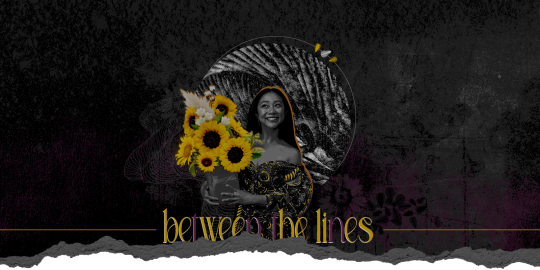

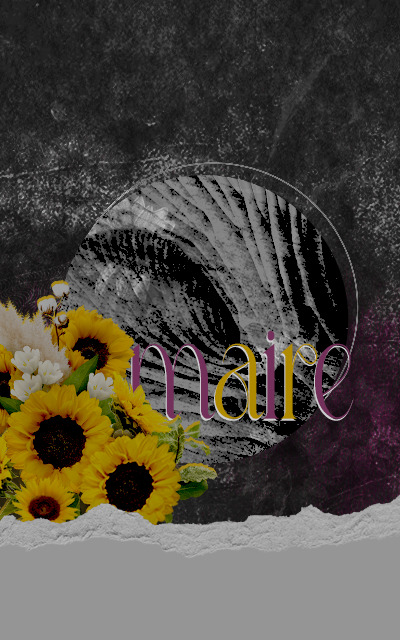

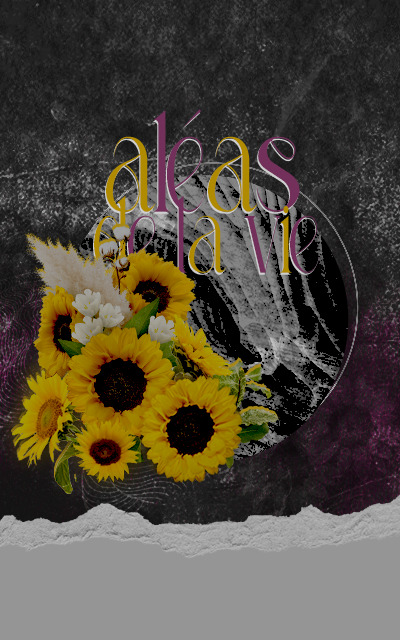

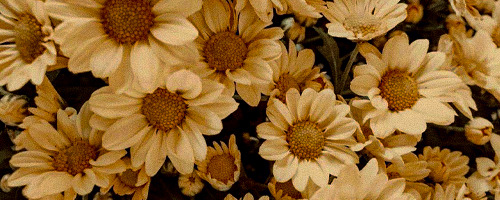
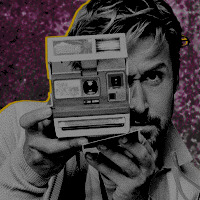
BETWEEN THE LINES, version 2 🌻
Portland l'appelle, douce et apaisante, un refuge où la pluie caresse les toits et les arbres murmurent des secrets. Ici, le temps ralentit, laissant place à l'essentiel. Les rues vibrent d'une lumière douce, les passants s'effacent et renaissent en silhouettes pleines d'histoires. Sous les parapluies, dans le cliquetis des vélos, il trouve une cadence qui apaise. Portland devient un carnet infini, chaque détail une inspiration, chaque visage une oeuvre d'art discrète. Ce n'est pas une fuite, mais une renaissance. Une promesse de nouvelles pages, écrites au rythme d'une ville où tout semble possible, simplement et doucement.
N’hésitez pas à aller faire votre tour sur Between the lines, https://betweenthelines.forumactif.com/ ✨
📌premier forum a utiliser un design signé Coquette, un avant-première de ce duo que je forme avec la codeuse @swgzl 😌
8 notes
·
View notes
Text

















Home
Giancarlo Pradelli
Introduzione di Andrea Emiliani
foto G.Pradelli
5 Continents Editions, Milano 2012, 72 pagine,40 illustrazioni in tricromia, Lingua Italiano/Francese/Inglese, Cartonato, 31x24cm, ISBN 978-88-7439-619-1
euro 30,00
email if you want to buy [email protected]
Nella piattezza del paesaggio emiliano sopravvivono ancora costruzioni che nessuno si fermerebbe a guardare perché prive di attrattiva spettacolare: sono case abbandonate, ridotte a ruderi, che attendono di essere riscoper te. In un’epoca pervasa dall’abitudine a dimenticare, Giancarlo Pradelli attraverso queste immagini ci fa scoprire il piacere del silenzio, dell’assenza; il suo punto di vista è quello dell’osservatore che nonostante la malinconia di una civiltàrurale ormai scomparsa, sa cogliere la dignitànelle cose create dall’uomo. Immagini in bianco nero essenziali, concise, che non conoscono retorica. Attraverso giochi di luce ed equilibri compositivi non casuali, le forme scheletriche rivelano soluzioni architettoniche trasformate dalla situazione di abbandono e acquistano nelle foto di Pradelli una straordinaria condizione di grazia e di sapiente eleganza.
Giancarlo Pradelli, nato nel 1966, vive e lavora a Modena. Ha lavorato per Life, The Times, Photo, Corriere della Sera, La Repubblica, La Stampa, Specchio. Le sue fotografie sono presenti nelle collezioni della Bibliothèque Nationale de France a Parigi e al CSAC (Centro Studi e Archivio della Comunicazione) presso l'Universitàdi Parma. Ha pubblicato Eolie (2005), Pierluigi Ghianda (2006) e Sutor Mantellassi (2011) presso 5 Continents Editions. Andrea Emiliani, critico d'arte, giàSoprintendente per il patrimonio storico e artistico dell’Emilia Romagna e direttore della Pinacoteca nazionale di Bologna, è stato docente di Museografia e Storia dell’arte all’universitàdi Bologna; attualmente è ispettore onorario per la Didattica dei musei del Patrimonio artistico e storico nazionale del ministero per i Beni e le attivitàculturali. Critico d’arte, ha collaborato alla riorganizzazione di diverse pinacoteche.
20/10/24
#Home#Giancarlo Pradelli#Emilia Romagna 2006/2012#case abbandonate#photography books#designbooksmilano#fashionbooksmilano
12 notes
·
View notes
Text

L'Art et la mode, no. 43, vol. 17, 24 octobre 1896, Paris. Toilettes de soirée. Dessin de Nada. (Parfum " Fleurs de France”, de Jones). Bibliothèque nationale de France
Robe en crêpe de Chine brodé gris argent. Choux froissés en taffetas rose de trois tons dégradés, formant garniture sur le côté gauche. Chaîne de diamant sur l'épaule droite.
Dress in silver grey embroidered crepe de chine. Crumpled choux in three shades of pink taffeta, forming trim on the left side. Diamond chain on the right shoulder.
—
Sortie de bal très nouvelle, en satin blanc et hauts volants de Chantilly posés sur un premier volant en mousseline de soie blanche. Collerette en mousseline de soie blanche.
Very new ball cape, in white satin and high Chantilly ruffles placed on a first ruffle in white silk muslin. Collar in white chiffon.
—
Toilette d'Opéra en velours "capucine". Revers et manches longues en guipure d'art. Epaulettes de velours bordées de zibeline comme les revers.
Opera ensemble in "capucine" velvet. Lapels and long sleeves in art guipure. Velvet epaulettes edged with sable like the lapels.
—
Toilette de jeune fille en taffetas "azur". Entre-deux d'Irlande et volant plissé en mousseline de soie assortie. Epaulettes faites de pétales de roses roses.
Young girl's ensemble in "azure" taffeta. Irish entre-deux and pleated flounce in matching chiffon. Epaulettes made of pink rose petals.
—
Toilette en tulle noir constellé de paillettes. Manches papillon et ceinture à longs pans en tulle "glaieul".
Black tulle dress studded with sequins. Butterfly sleeves and long-tailed belt in "gladiolus" tulle.
#L'Art et la mode#19th century#1890s#1896#on this day#October 24#periodical#fashion#fashion plate#description#bibliothèque nationale de france#dress#cape#collar#ball#gown#evening#opera#Modèles de chez#Nada
110 notes
·
View notes